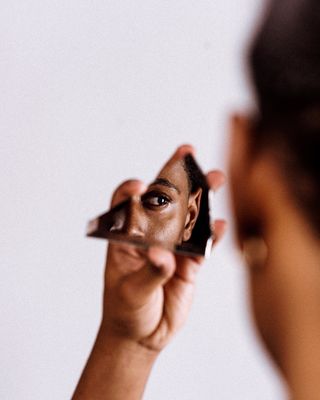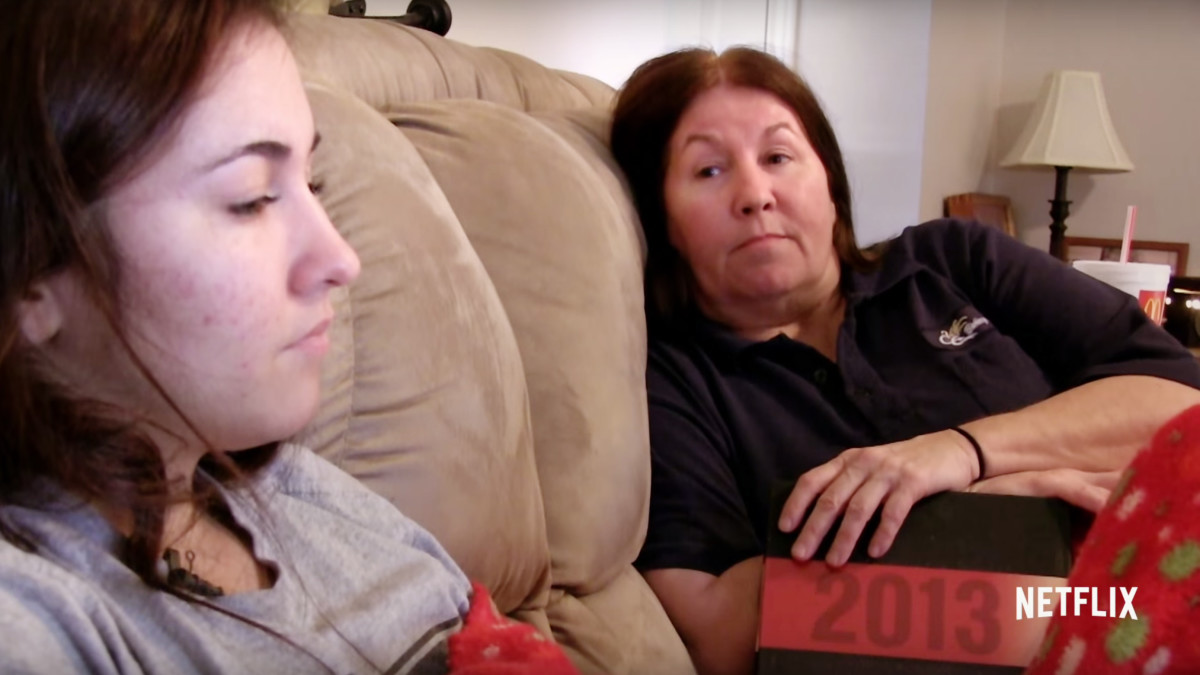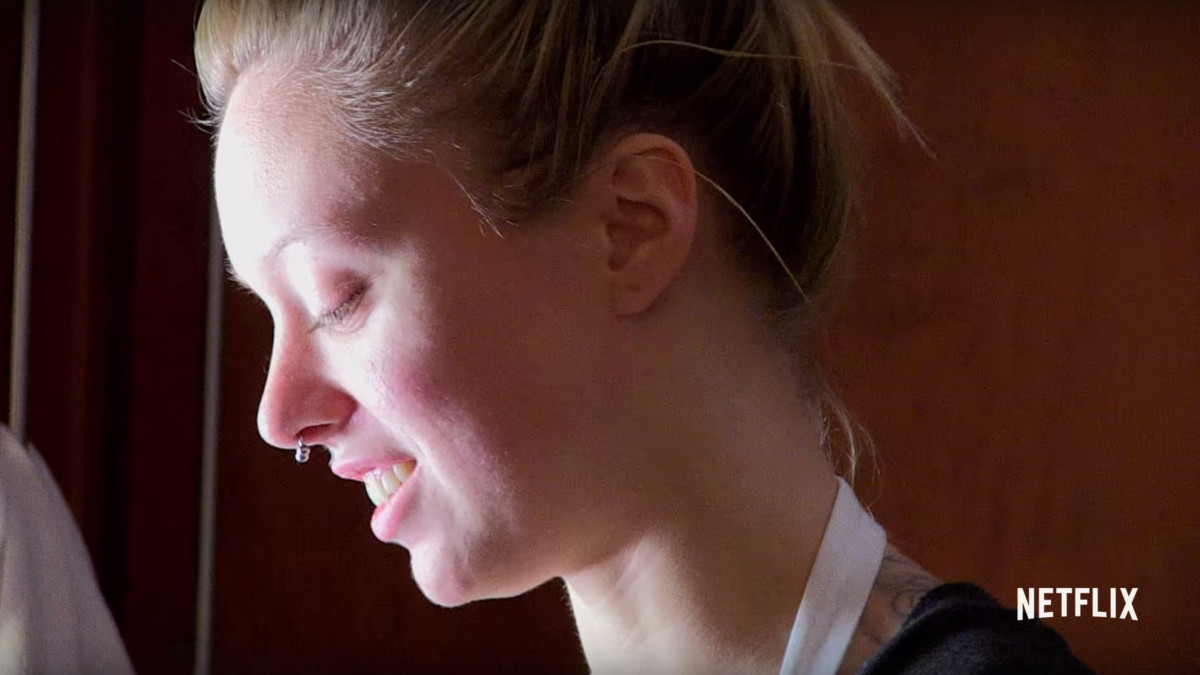Sharing a cropped version of a very long study on BDSM related human trafficking cases. This list of cases is just the tip of the iceberg. Many more cases could be added. Be careful when reading this graphic text, take a break when needed but remember not to detach yourself from the fact that these cases are not fiction. The cases involve experiences of real human beings who have suffered severe abuse in their life. I’ll share the list of adult cases only but know that there is a similar list of cases that involve child victims as well. A link to the complete analysis is available at the bottom of the article.
Written by Robert Peters
Morality in Media & National Center on Sexual Exploitation
Abstract
A collection of accounts of sadomasochistic sexual abuse from news reports and scholarly and professional sources about the dark underbelly of sadomasochism and the pornography that contributes to it. It focuses on crimes and other harmful sexual behavior related to the pursuit of sadistic sexual pleasure in North America and the U.K. It is intended to be a resource to educate people about how sadomasochism can lead to harmful and even deadly sadistic sexual behavior.
A warning about the content of this paper
Although there is nothing in this paper that is pornographic or “erotic,” the reader will be confronted repeatedly with graphic accounts of horrific sadomasochistic sexual abuse. Reading these accounts will be troubling and even unbearable
for some readers; and if the reader finds descriptions of such abuse to be arousing, the paper may be a temptation to seek out pornography that depicts these types of abuse.
There is a tension between the need to fully inform the public and the need to withhold information for law enforcement purposes and to protect public sensibilities and privacy. The press has been known to “sensationalize” sex crimes. This leads to desensitization. But there are also occasions when the public needs to know the whole truth, however unpleasant, but is kept (partly) in the dark. This leads to a lack of resolve.
Be careful what you open the door of your life to
For those contemplating sadomasochism as a means to “spice up” their sex lives, I say, “Be careful what you open the door of your life to because you don’t know what S&M will lead you or a partner into sooner or later.” Craig Johnson (1985) described the problem this way:
Sadomasochism is indulged in…People like it. This is precisely one of the great dangers…A person tries it and finds it really gives him far out kicks. He may achieve orgasms like he’s never achieved before. It happens. Then he may come back to it, again and again…S/M works. (So, does LSD). But…he may forget (or never learn) that there are other, more deeply satisfying means to sexual fulfillment. S/M is very like using drugs to achieve sensation…He can become a ‘pain junkie.’ He may need more and more pain (or, if he is a sadist…to inflict more and more).
Sexual addictions of any kind are difficult to break free from (Kheriaty, 2015). In his monograph Pornography’s Effects on Adults and Children (2001), Victor B. Cline described the problem this way:
The second phase was an escalation-effect. With the passage of time, the addicted person required rougher, more explicit, more deviant, and “kinky” kinds of sexual material to get their “highs” and “sexual turnons.”…If their wives or girlfriends were involved with them, they eventually pushed their partners into doing increasingly bizarre and deviant sexual activities. In many cases, this resulted in a rupture in the relationship when the woman refused to go further – often leading to much conflict, separation or divorce.
Many of the accounts in this paper demonstrate that sadomasochist practices can start voluntary but lead to coerced behavior even murder. As in rape cases, trial judges and juries sometimes struggle to find perpetrators guilty in these situations,
The role of pornography in sadistic sex crimes
Sadomasochistic sexual abuse and pornography have much in common. If an individual becomes sexually aroused by binding a person and/or by forcing sex on a person, and/or by hurting, injuring or killing a person, he will also likely be sexually aroused by viewing depictions or reading descriptions of such behavior. Therefore, many men who commit sadistic sex crimes also view pornography that depicts bondage, rape, sexual torture, and sexual homicide (Cline, 2001).
Pornography, however, does not have to depict sexual violence to serve as fuel or a trigger for sadistic sexual violence. Imagine an attractive young woman walking by two young men who are sitting on a park bench. Both look up and see her walk by. One sees a person he would love to meet and spend time with. The other sees a woman he wants to hogtie, rape, torture and strangle. If the latter views nonviolent pornography, he can also see a woman he would like to overpower and violate. I will add that just because a news report or court opinion does not state that the (alleged) perpetrator possessed or viewed pornography doesn’t mean he didn’t do so. These cases, however, demonstrate that many perpetrators regularly view sadomasochist pornography.
The link between sadomasochism and sex trafficking
For almost a decade, I read detailed investigative reports prepared by two retired law enforcement agents who followed up on citizen complaints about possible violations of federal internet obscenity laws. The hardcore sexual conduct depicted on some websites was so horrific that it defied the imagination that the women had voluntarily consented to participate.
Of course, as Donna Hughes (2010) has pointed out in her article, “Sex trafficking of women for the production of pornography,” women who perform in hardcore pornography for pay often consent without (fully) comprehending what they will be subjected to:
Women used in the production of commercial pornography in the U.S. are often subjected to violence and coercion during filming. Often, they protest and try to stop the filming or back-out before filming begins. Their protests are ignored, or they are pressured by their agent or the director to continue. Their experiences of coercion and trickery often meet the criteria for sex trafficking. Sex trafficking is a federal felony.
Regardless of whether the conduct meets the criteria for sex trafficking from start to finish or only after a point in time, the point is that as S&M becomes appealing to more people and as the pornography they view and the conduct they engage in becomes more extreme, the demand for women trafficked into pornography and prostitution will increase. An article in Newsweek (Bennetts, 2011) reported that a study found that “…Over time, as a result of their prostitution and pornography use, sex buyers reported that their sexual preferences changed and they sought more sadomasochistic and anal sex.” A later paper, “The slave and the porn star: Sexual trafficking and pornography” (Peters, Lederer, & Kelly, 2012) found that “There may also be a relationship between consumption of or addiction to hardcore pornography that depicts the domination and abuse of women and paying to have sex with women trafficked into prostitution…”
Mainstreaming of sadomasochism
Fifty Shades of Grey is just the tip of the iceberg when it comes to “erotic” (if not pornographic) and/or “nonjudgmental” (if not celebratory) entertainment and news media portrayals of S&M. Advertising, fashion, art, books, films, magazines, newspapers, music/rap videos, theater, and videogames have all helped popularize sadomasochism and make it appealing to young and old.
The truth of the matter is that sadomasochism is a sexual perversion that has caused incalculable harm and it isn’t just hardcore pornographers who have blood on their hands.
I realize that this is an imperfect analogy, but it occurred to me as I worked on this collection that the marketing of Fifty Shades of Grey could be compared to the marketing of a “new nonprescription drug that can transform your pain into pleasure,” without telling prospective buyers that the new drug is laced with morphine.
In both situations, the movie and the drug are being marketed as something that will bring pleasure to your life. However, both products, although they may bring a certain degree of pleasure, have a certain probability of harmful effects both psychologically and physically.
This collection is just the tip of the iceberg
This collection of accounts of sadomasochism would have been much longer if I had access to an online database of newspaper articles and court cases and I had a capable assistant(s) to help with online research and writing.
But even with access to a database and with assistance, it would be impossible to bring to light every crime and injurious incident motivated by sexual sadism. Among other things, this behavior is often not reported, and when it is reported, important details are often omitted in news articles and other accounts. Internet search engines also have limitations, and most news publications do not publish their entire archive online. To do justice to this topic it would require contacting,
among others, law enforcement agents, crime reporters, forensic experts, mental health professionals, survivors, and family members.
And finally, as difficult as it was to research and put this collection together, it was almost as difficult to stop. Many more stories need to be retold and told until the harm of this activity sinks in. Sadomasochistic sexual abuse is not harmless fun.
Sex Trafficking: Adult Victims
“Woman brought to Virginia was torture victim, FBI says.” Bill McKelway. Richmond Times-Dispatch, February 13, 2015, https://newsadvance.com/news/state/woman-brought-to-virginia-was-torture-victim-fbi-says/article_bea726b0-b3b0-11e4-9367-1feb09877ea4.html “An Iowa couple have been charged with sex trafficking and torture in a brutal cross-country scheme first uncovered by Virginia State Police and New Kent County authorities. New Kent officials dropped charges…against [male Defendant], 36, and [female Defendant], 31,…as federal agents filed new charges…Starved and denied water, the woman was abducted…in Iowa and told investigators ‘that she was forced to engage in prostitution in order to earn money for…food and gas on the trip,’ according to federal documents. Sexual rendezvous were arranged on Craigslist…, according to the federal documents…[D]octors were able to document multiple injuries on the woman that were consistent with her account and included ‘burns around her abdomen, groin, and back.’ The burns allegedly originated from a set of keys that [male Defendant] heated over the RV’s stove burner. The court documents also allege that the victim ‘explained in detail how [Defendants] drove nails into her feet with a hammer.’ The woman sustained multiple branding wounds and injuries consistent with having had nails hammered into her feet. Investigators recovered pictures of the victim ‘nude and gagged’…” [Author’s note: The Times-Dispatch also reported that the victim was “ordered to address [Defendants] as ‘Master’ and ‘Mistress.’” Both Defendants pled guilty to federal sex trafficking charges.]
“Police: Woman’s Vegas ‘dream’ smashed by sex industry torture.” Mike Blasky. Las Vegas Review-Journal, September 25, 2014, http://www.reviewjournal.com/news/las-vegas/police-woman-s-vegas-dream-smashed-sex-industry-torture. “…The pimp promised a life of luxury — they’d ‘get to the top together,’ he said. The woman had never worked as a prostitute. But she had almost nothing to her name. She wanted to believe him…[F]our months after being conned into a life of prostitution in Las Vegas, the woman was left for dead…In addition to the numerous bruises, she had spinal fractures and severe internal injuries to her kidney, liver and spleen. The lacerations on her back and butt…were so infected that they stunk. Her middle finger on her right hand, ravaged by gangrene, needed to be amputated. The woman, malnourished to a point she lost 70 pounds, was reluctant at first to tell police who nearly killed her despite fearing that the pimp would kill her for talking, she eventually spoke…[T]he suspect, [Defendant], 28, was booked at the Clark County jail on a mountain of felony charges, including sex trafficking…The woman’s story was documented in a lengthy Metro report obtained by the Review-Journal…It’s a common thread — smooth-talking pimp convinces a down-on-her-luck woman he can change her life…‘We call it selling them the dream,’ Metro Lt. Karen Hughes said. Pimps beat their prostitutes to establish mental and physical dominance, she said. But Hughes said [Defendant’s] disregard for humanity made him one of the most violent suspects she had encountered…The woman told police [Defendant] initially treated her well…But the beatings started just a few weeks later…The beatings intensified…, the woman said, after another prostitute [Defendant] recruited to the home sneaked away…[Defendant] blamed the woman for not keeping watch, she told police, and struck her in the face and body with his fists and a belt. The next month and a half [Defendant] began beating her with metal poles, wires, a wooden paddle and a chair, the report said. The wire whippings were among the worst beatings, she said, opening deep wounds…The woman told police the beatings were ‘torture’ and described being scalded with hot water during one attack; in another, Sharpe used waterboarding as punishment, the woman said. She said Sharpe placed a shirt on her face, forced her into the bathtub and dumped water on her face. The woman thought she was drowning and fell unconscious, she told police.”
“Three Defendants scheduled to be arraigned for human trafficking,
kidnapping, and torturing woman.” Release. Orange County District Attorney,” July 30, 2014, http://newsantaana.com/2014/07/30/three-convicted-of-human-trafficking-kidnapping-and-torture.“Three defendants are scheduled to be arraigned today…[Male Defendant1], 26,…is charged with two felony counts each of torture, kidnapping, mayhem, and one felony count each of human trafficking, aggravated assault, pimping, and pandering, with sentencing enhancement and allegations for personal infliction of great bodily injury and great bodily injury…[Male Defendant2], 33,…and [female Defendant], 27,…are both charged with two felony counts of kidnapping, one felony count each of torture, human trafficking, mayhem, aggravated assault, pimping, and pandering, with sentencing enhancement and allegations for personal infliction of great bodily injury and great bodily injury…Circumstances of the Case [Male Defendant1] is accused of being a human trafficker/pimp who exploits women and/or children for financial gain. The victims are required to turn over all payment they receive for sex acts from sex purchasers to their pimp. Failure to follow these rules can result in deprivation of food and/or physical and/or emotional abuse. In May 2014, [male Defendant1] is accused of recruiting 25-year-old Jane Doe to perform commercial sex services for his benefit…On July 22, 2014, [male Defendant1] is accused of becoming upsetwith the victim and burning her with a heated glass pipe used to ingest methamphetamine while they were staying at a motel…He is then accused of using zipties to tie the victim to a chair, duct taping her mouth, and blindfolding her…On July 27, 2014, [both male Defendants] are accused of torturing Jane Doe by physically beating her, burning her multiple times with a hot electric clothing iron by placing it on her back, and tying the victim to a chair and tipping it back. They’re also accused of pouring water down the victim’s mouth and nose. [Female Defendant] is accused of aiding and abetting in the torture.”
“The Horrific World of Online Sexual Violence Against Women.” David
DiSalvo. Forbes, July 1, 2012, http://www.forbes.com/sites/daviddisalvo/
2012/07/11/special-investigation-the-horrific-world-of-online-sexual-violenceagainst-women/. “The videotaped rape industry is much larger than most would think…There are multiple varieties of these films, and it is not always easy to know in which cases participants are willing (possibly actors) or victims…But from my research, two things are abundantly clear: (1) both simulated and real rape is being videotaped and shown…and (2) in many of the cases, the women have clearly been tricked into being in these films, and/or were abducted and drugged. Several of the films originate in Russia and Eastern Europe…Indeed, it appears that there’s a burgeoning industry of rape films coming from this part of the world, which is…a major highway for human sex trafficking…The other major geographic region that appears to produce the bulk of these films is Southeast Asia. Staged sexual assault videos have long come from this part of the world, but the depth and brazenness of the content seems to have increased tenfold in recent years…Another category of Asian rape videos features a beautiful girl who comes to a modeling office under the auspices of competing for a modeling contract…When she comes back to the main room, the men ask that she finish the paperwork and offer her a soda while she does so. The soda is laced with a drug that causes her to pass out. When she wakes, she finds that she has been harnessed to a chair and the two men are holding video cameras. Still semi-drugged, she tries to scream but is so groggy that she can barely focus on what’s happening. The men then begin ripping off her clothes and torturing her with small electronic devices placed in her vagina, all the while laughing at her muted responses. When they have finished torturing her, they remove her from the chair and throw her down on a matted floor, where she is hogtied and repeatedly raped by both men.”
“The Slave and the Porn Star: Sexual Trafficking and Pornography.”
Robert Peters, Laura Lederer & Shane Kelly. Protection Project Journal of Human Rights and Civil Society, (5):1-21, at 6-7, John Hopkins Univ. (2012), http://www.ifsnetwork.org/Portals/4/docs/TPP-J-HR-Civ-Socy_Vol-5_2012-wcover1.pdf. “In United States v. Bagley et al…the alleged victim was a young woman with a troubled childhood who suffered from mental deficiencies. She is referred to as ‘FV’ in the indictment. The primary defendants, a husband and wife, took FV into their home when she was 16 years old, after she ran away from a foster home. The defendants allegedly began to sexually abuse and physically harm FV and forced her to dance at local strip clubs. They allegedly forced the victim to act as their property, and ‘Edward Bagley allegedly beat, whipped, flogged, suffocated, choked, electrocuted, caned, skewered, drowned, mutilated, hung and caged FV to coerce her to become a sex slave.’ The defendants forced FV to sign a slave contract that she believed bound her to act as their slave, and they had her tattooed with a barcode…Multiple other defendants communicated with Bagley regarding his activities and allegedly participated in some of his videos and photo shoots. At one point, FV even ‘appeared on the cover of the July 2007 issue of Taboo, a publication owned by Hustler Magazine Group, and was the subject of a story and multipage photo spread inside’…Four defendants are being prosecuted for these actions under the forced labor and sex trafficking provisions of the TVPA, along with other serious crimes…” [Author’s note: Allegations in this case are described in detail in the Superseding Indictment, at http://www.justice.gov/sites/default/files/usao-wdmo/legacy/2011/05/02/bagley_indictment2.pdf.]
“Katya’s story: trafficked to the UK, sent home to torture.” Amelia Gentleman. Guardian (UK), April 19, 2011, http://www.theguardian.com/law/2011/apr/19/sex-trafficking-uk-legal-reform. “When they assessed her case, British immigration officials knew that Katya, a vulnerable 18-year-old from Moldova, had been trafficked and forced into prostitution, but ruled that she would face no real danger if she was sent back. Days after her removal from the UK, her traffickers tracked her down to the Moldovan village where she had grown up. She was gang-raped, strung up by a rope from a tree, and forced to dig her own grave. One of her front teeth was pulled out with a pair of pliers. Shortly afterwards she was re-trafficked, first to Israel and later back to the UK…The Moldovan woman was first kidnapped by traffickers when she was 14, repeatedly sold on to pimps and other traffickers, and forced to work as a prostitute for seven years in Italy, Turkey, Hungary, Romania, Israel and the UK…The exhaustive account that Katya has given in court documents, explaining how she was targeted, captured and intimidated, reveals the sophisticated methods employed by gangs trafficking vulnerable women from eastern Europe, Africa and the far east. It also reveals the danger that these women are often exposed to when the British immigration service opts to remove them…. Although they recognised that she had been trafficked, immigration officials decided to remove her to Moldova…A few days after she returned home, her traffickers found her. ‘They took me to a forest and I was beaten and raped. Then they made a noose out of rope and told me to dig my own grave as I was going to be killed,’ Katya’s court statement reads. ‘They tied the noose around my neck and let me hang before cutting the branch off the tree. I really believed I was going to die. They then drove me to a house where many men were staying. They were all very drunk and took turns to rape me. When I tried to resist, one man physically restrained me and pulled my front tooth out using pliers’…Katya has been interviewed by medical and trafficking experts in preparation for the trial, all of whom found her account credible.”
“Kidnap, rape and animal sex porn trial starts.” Expatica News, January 1, 2005, http://www.expatica.com/be/news/country-news/Kidnap-rape-and-animal-sex-porn-trial-starts_125376.html. “The trial of two Belgian brothers, and three other people accused of kidnapping, raping and forcing women to have sex with animals for pornographic videos has opened in the Dutch city of Lelystad…They are charged with kidnapping, rape, human smuggling and membership of a criminal gang. Three young North African asylum seekers were kidnapped in Belgium and forced to undergo various sex acts in the farm shed, until one of the women escaped…and alerted police….[T]he three women possibly escaped a brutal death in which they would have been dismembered in front of a camera and murdered for a ‘snuff’ film. The gang had allegedly…made contact with people who were willing to carry out the crime.”
“The Girls Next Door.” Peter Landesman. New York Times Magazine, January 25, 2004, http://www.nytimes.com/2004/01/25/magazine/25SEXTRAFFIC.html. “Immigration and Customs Enforcement agents at the Cyber Crimes Center in Fairfax, Va., are finding that when it comes to sex, what was once considered abnormal is now the norm. They are tracking a clear spike in the demand for harder-core pornography on the Internet. ‘We’ve become desensitized by the soft stuff; now we need a harder and harder hit,’ says I.C.E. Special Agent Perry Woo.
Cybernetworks…through which you can download and trade images and videos – have become the Mexican border of virtual sexual exploitation. I had heard of one Web site that supposedly offered sex slaves for purchase to individuals. The I.C.E. agents hadn’t heard of it. Special Agent Don Daufenbach, I.C.E.’s manager for undercover operations, brought it up on a screen. A hush came over the room as the agents leaned forward, clearly disturbed. ‘That sure looks like the real thing,’ Daufenbach said. There were streams of Web pages of thumbnail images of young women of every ethnicity in obvious distress, bound, gagged, contorted. The agents in the room pointed out probable injuries from torture. Cyberauctions for some of the women were in progress…’ With new Internet technology,’ Woo said, ‘pornography is becoming more pervasive. With Web cams we’re seeing more live molestation of children.’”
“‘Welcome to the Rape Camp’: Sexual Exploitation and the Internet in Cambodia.” Donna M. Hughes. Journal of Sexual Aggression, 2000; 6(1/2):1-23 (citations omitted), http://www.uri.edu/artsci/wms/hughes/rape_camp.pdf. “In October 1999, an American living in Phnom Penh, Cambodia, announced that he was adding a live bondage sex show to his Internet site…His pornography web site, ‘Rape Camp,’ featured ‘Asian sex slaves’ who were used for ‘bondage, discipline and humiliation.’ The women on the web site were blindfolded, gagged and/or bound with ropes while being used in sex acts; some had clothespins clipped to their breasts…Viewers were encouraged to ‘humiliate these Asian sex slaves to your hearts content’…Expanded service was to feature live interactive Internet transmission of bondage sex shows from Cambodia with pay-per-view access in which customers could relay requests for torture that would be fulfilled…He claimed the women were not harmed or forced to perform the sex acts and were paid… He rationalized his ‘Rape Camp’ by saying, “They’re selling these women anyway in prostitute houses…Once the pornographic web site came to the attention of the Cambodian Minister of Women’s Affairs, Mu Sochua, she called… for him to be charged with violating a Cambodian law prohibiting sexual exploitation and trafficking of women… Although [he] faced up to five years in jail in Cambodia for violating the law on human trafficking and sexual exploitation, U.S. officials intervened…to assist him…”
Attorney General’s Commission on Pornography: Final Report
(1986), Part 4, Chapter 2 [“Use of Performers in Commercial Pornography”], Subsection B.3.2. [“Coercion”], http://www.porn-report.com/coercion.htm. “…It is an unpleasant, controversial, but in our view well established fact, that at least some performers have been physically coerced into appearing in sexually-explicit material, while others have been forced to engage in sexual activity during performances that they had not agreed to beforehand. We heard direct testimony from… The credibility of that testimony was strongly reinforced by…We also find highly credible the assertion of law enforcement officers…As one of them put it: ‘Coercion comes…in the area of anal sex, which many of the models don’t want to get into. It really comes into a factor in the bondage and S&M type films. I have talked to models and I have seen films where it’s quite obvious that the model had no idea as to what they were getting into. Part of an S&M film, when they start torturing the victim, tying them, whipping them and putting cigarettes out on their body, is the showing of pain. This is what sexually excites some people…[W]e are not dealing with people that can act…T[]he pain is very real.’”
Source: https://digitalcommons.uri.edu/cgi/viewcontent.cgi?article=1119&context=dignity
Een reactie plaatsen







